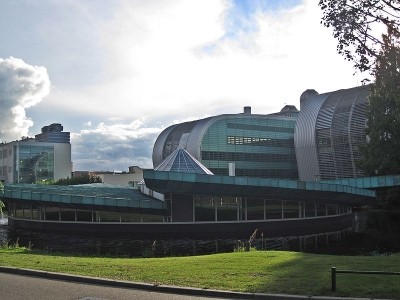Smart' nanotubes could have drug delivery uses
have developed 'smart' bio-nanotubes that could be used to deliver
a drug or gene to a particular location in the body.
The nanotubes can be made with either open or closed ends, and in the future could be designed to encapsulate a drug payload and then open up when the time comes for drug delivery, say the researchers from the University of California, Santa Barbara.
The team found that by manipulating the electrical charges of lipid bilayer membranes and microtubules from cells, they could create open or closed bio-nanotubes, or nanoscale capsules.
The scientists used microtubules purified from the brain tissue of a cow for their experiments. Microtubules are nanometer-scale hollow cylinders derived from the cell cytoskeleton. In an organism, microtubules and their assembled structures are critical components in a broad range of cell functions -- from providing tracks for the transport of cargo to forming the spindle structure in cell division. Their functions include the transport of neurotransmitter precursors in neurons.
UCSB researcher Uri Raviv, explained: "We looked at the interaction between microtubules - negatively charged nanometer-scale hollow cylinders derived from cell cytoskeleton - and cationic (positively charged) lipid membranes. We discovered that, under the right conditions, spontaneous lipid protein nanotubules will form."
The researchers liken the process of nanotubule formation to that of water beading up or coating a car, depending on whether or not the car has been waxed. Likewise the lipid will either bead up on the surface of the microtubule, or flatten out and coat the whole cylindrical surface of the microtubule, depending on the charge.
The new type of self-assembly arises because of a mismatch between the charge densities of microtubules and cationic lipid, explained Raviv. "This is a novel finding in equilibrium self-assembly," he said.
The nanotubule consisting of a three-layer wall appears to be the way the system compensates for this charge density mismatch, according to the authors.
"Very interestingly, we have found that controlling the degree of overcharging of the lipid-protein nanotube enables us to switch between two states of nanotubes," said Cyrus Safinya, professor of materials and physics at UCSB and one of the lead scientists in the project.
"With either open ends (negative overcharged), or closed ends (positive overcharged with lipid caps), these nanotubes could form the basis for controlled chemical and drug encapsulation and release."
The inner space of the nanotube in these experiments measures about 16 nanometers in diameter, and the whole capsule is about 40 nanometers in diameter.
Raviv said that the chemotherapy drug paclitaxel is one type of drug that could be delivered with these nanotubes. The scientists are already using paclitaxel in their experiments to stabilise and lengthen the lipid-protein nanotubes.
The news is reported in an article to be published in the August 9 issue of the Proceedings of the National Academy of Sciences. It is currently available on-line in the PNAS Early Edition.









